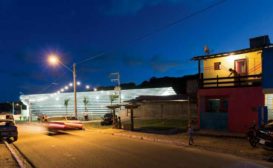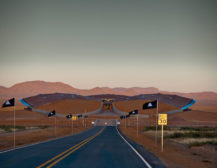Articles by Anna Fixsen
Studio V Architecture partnered with lighting designer Suzan Tillotson to create a new face for the Empire City Casino at Yonkers Raceway.
Read More
Site Unseen
As pressure mounts in the Persian Gulf for migrant-labor reform after scores of worker deaths, architects should consider the broader impact of their designs.
Read More
Exercise in Design
Herzog & de Meuron shapes a welcome recreation center in a tight-knit favela community.
Read More
Copyright ©2024. All Rights Reserved BNP Media.
Design, CMS, Hosting & Web Development :: ePublishing

